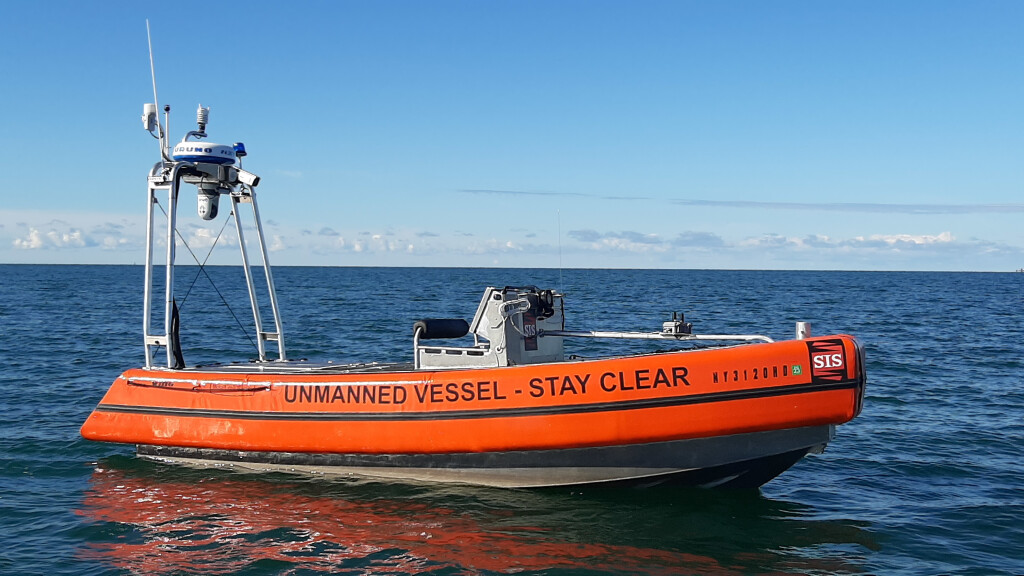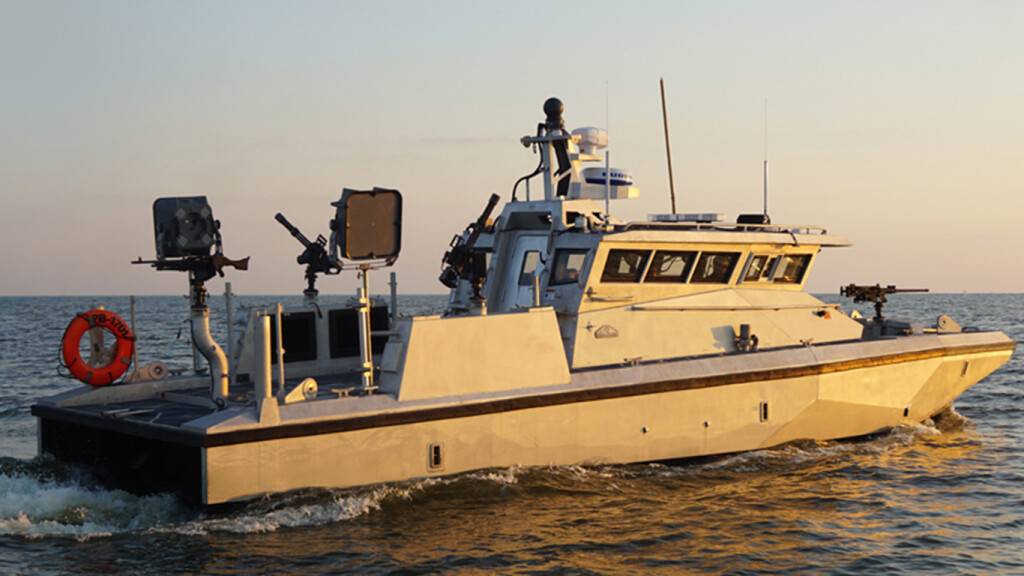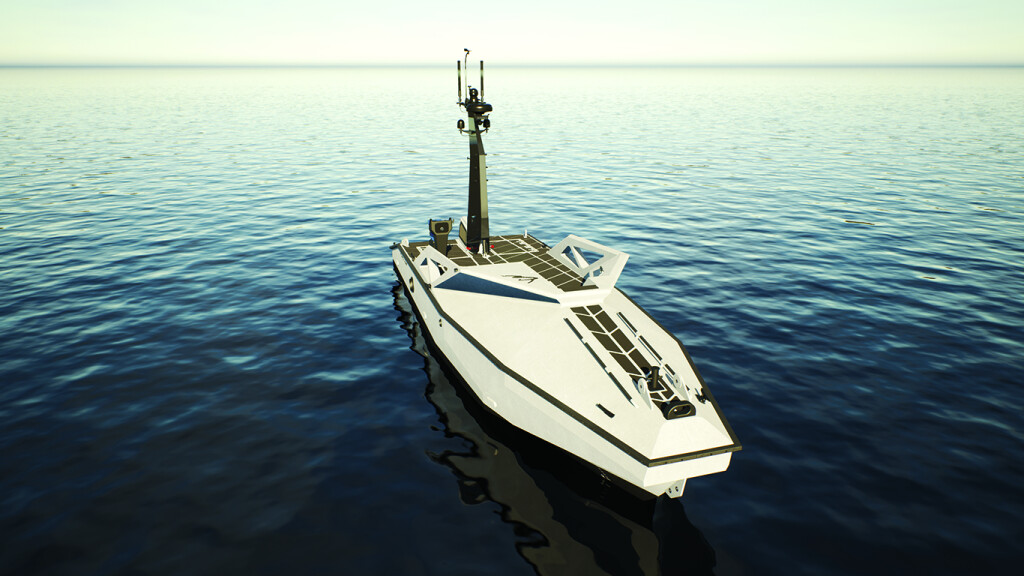The Watcher arrived back at MetalCraft Marine’s headquarters in Watertown, N.Y., on April 26, after a nearly yearlong lease to the Coast Guard.
The 23'x8'6" aluminum RIB patrol/survey boat is MetalCraft’s first autonomous vessel. MetalCraft Marine designed and built it in conjunction with Spatial Integrated Systems, Virginia Beach, Va., who provided the autonomy solution.
The Coast Guard leased The Watcher after it was awarded a contract for its Maritime Domain Awareness Program. The autonomous vessel was leased for nearly a year. Its big test came in late October through most of November 2020, when it operated as an unmanned surface vessel for 30 days and nights, often in severe seas, patrolling a 20-square-mile area 30 miles off Hawaii’s Oahu Island.
The point of spending four weeks off Oahu Island was to test the feasibility of using an autonomous surface vessel to support Coast Guard missions monitoring remote areas of the Pacific Ocean. These are restricted missile sites where fishing is not allowed but fishermen do go there. “If a missile is launched people could be killed,” said Bob Clark, MetalCraft Marine’s contract manager.
One aspect of The Watcher that attracted the Coast Guard’s attention is its size. “It fits on 80 to 90 percent of the Coast Guard ships,” said Clark. “They want to deploy one at a missile test site in the middle of the Pacific, drop it in the water and control it from a ship or land base.”

Off Hawaii The Watcher was set up to begin drifting at preset coordinates and after 90 minutes would reach another set of coordinates where the engine, a 120-hp Volvo D3, self-started and drove The Watcher to another set of coordinates. Then the engine shut down and vessel resumed drifting.
If The Watcher’s cameras, which were running all the time, detected intruders, a satellite-transmitted alarm went off in Virginia Beach where Spatial Integrated Systems and MetalCraft were monitoring vessel. No illegal intruders came into the area The Watcher was monitoring, but boats were dispatched several times a week at different times and in different conditions to see if The Watcher detected their presence. “It did, every time, day and night,” said Clark, even though the area was being hit with high winds and large seas.
Prior to starting the test, weather calculations, based on NOAA data and the time of the year the test was taking place, determined there should have been only five days of rough weather. Instead, it was 21 days of “severe weather,” said Clark, with 10' to 12’ waves on most days. The weather was bad enough that a subcontractor sent out to take photos of The Watcher “had a hard time finding the boat.”
The three weeks of extremely rough sea conditions lead to what Clark referred to “as the only hiccup, if you can call it a hiccup” in the test. That was numerous false sightings recorded by The Watcher’s cameras that set off alarms in Virginia Beach. A lot of those were at night, “where the crest of a large wave could appear as something.”
The false sightings required a lot more satellite time than expected. How much time? Well, at the start of the operation it was estimated the satellite time would cost about $25,000 for the month. The final figure was closer to $100,000.
The answer to the multiple false sightings might be to reduce the camera’s sensitivity level. “Do you want that level of sensitivity?” Clark asked. “They believed we needed it, but no one thought of the number times it would go off because of wave action.”
The large wave action often put The Watcher and its solar panels up at weird angles where they lost the sun and shut down. Regaining the sun, the solar panels would “fire up but it wasn’t the best thing for the batteries,” noted Clark. Thus, there were a couple of times when the engine had to be run to charge the batteries.
It addition, the wind and seas pushed The Watcher faster than anticipated on its drifting route, so it was an hour drifting, as opposed to the scheduled 90 minutes, thus more fuel was consumed than planned. The Watcher didn’t run out of fuel. At the start of the trip there were 580 gals. of fuel aboard, enough for 1,800 miles at planing speed.
Twice The Watcher was boarded. The first time was when two engine sensors went off and needed to be checked out. The second time was when waves knocked the GPS sensor overboard and it had to be replaced. Otherwise, no one came aboard, though The Watcher had been set up with a console and a flip-up panel on the deck that allowed a person to operate the boat if anything went wrong. The deck was composed of solar panels that could be walked on.
“The overarching thing to autonomy,” said Clark, “is you can do 30 days and nights of work and not risk or beat the hell out of a crew. That’s a huge one.”
At the end of the test period, Clark said the results were good. “Really, really good,” and he said he thought The Watcher exceeded the Coast Guard expectations.

METAL SHARK
Metal Shark has built a lot of remotely operated and unmanned boats, over 400 in fact, but its latest project doesn’t resemble any of those vessels. That’s the 40' long range unmanned surface vessel (LRUSV) for the U.S. Marine Corps. In January, under an agreement with the Marine Corps Systems Command, the Jeanerette, La., boatbuilder was chosen to design, build and test the LRUSV in conjunction with Spatial Integrated Systems, which is responsible for the vessel’s autonomous capabilities.
Metal Shark’s Sharktech Autonomous Vessel division, created in 2018 to focus on the advancement of unmanned vessel technology, is guiding the project. “This is the most sensitive project we’ve ever undertaken,” said Josh Stickles, Metal Shark’s executive vice president. “It’s on a whole different level than a patrol boat.”
It’s not just an autonomous boat. It’s a new naval defense system, made up of a fleet of autonomous boats capable of traveling extended distances. Interacting with each other, they accept targets autonomously and then launch classified payloads. These include loitering munitions, sometimes called suicide drones that search for a target and attack once one is located.
“The systems and software integration will result in the most turnkey and capable USV available, operating with greater autonomy over longer ranges to support a wider range of missions than anything seen today,” Metal Shark CEO Chris Allard said in an email.
The military won’t be the only one to benefit from the Marine’s LRUSV, which is using technologies that a few years ago were at an R&D level, if they existed at all, and making them operational for the autonomous market. That advancement, said Allard, “will certainly impact” other markets, be they patrol boats, tugs or offshore supply vessels.
Metal Shark is currently integrating the autonomy and command and control systems in collaboration with Spatial Integrated Systems. The boatyard is also building manned support boats for the LRUSV, based on its 40 Defiant military patrol boat that is currently being built as the Navy’s 40PB patrol boat.




